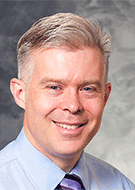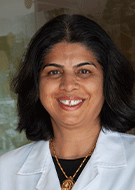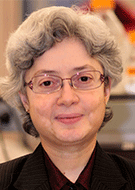The Pandemic’s Unexpected Impacts on Radiologic Research
Shutdowns and surges positively and negatively affecting research two years later




In early 2020, research labs around the world swiftly shut down in the wake of a virus that had been declared a pandemic. As research resources were redirected toward understanding and ending the pandemic, radiologic researchers expressed concern that halting non-COVID-19 research indefinitely would put clinical imaging research behind by two to three years.
To assess the impact of the pandemic on radiologic research two years on, RSNA News followed-up with the authors of the 2020 Radiology article, “The Impact of the COVID-19 Pandemic on the Radiology Research Enterprise: Radiology Scientific Expert Panel.”
Their perspectives indicate that the shut downs and surges have had unforeseen effects on research—for better and worse.
The Current State of Radiologic Research
Most researchers agree that while work slowed down initially in 2020, it has now resumed, but not at the same pre-pandemic pace.
Scott B. Reeder, MD, PhD, professor and vice chair of research in the Department of Radiology at the University of Wisconsin School of Medicine and Public Health in Madison, said one of the primary reasons for this is the difficulty of enrolling and retaining research subjects during spikes in COVID-19 cases.
“Subsequent waves of infections have impacted our research because of the willingness of subjects to participate,” Dr. Reeder said. “During a surge or lockdown, there has been reticence on the part of participants to come in and then they might be lost to follow-up.”
Personnel issues have also played a large role in the lagging resumption of imaging research, according to Vicky Goh, MD, FRCR, professor and chair of clinical cancer imaging at the School of Biomedical Engineering and Imaging Sciences at King's College London. Working at a research institution that is largely government-funded in the context of an economic downturn has meant less funding for research.
“There's a smaller funding pot now and imaging research can seem expensive compared to other clinical diagnostic research,” Dr. Goh said. “There is a lack of funding for new hires, even for replacement posts. If the amount of personnel needed to carry out a project isn’t there, that research is stalled.”
Achala Vagal, MD, professor and vice chair of research in the Department of Radiology at the University of Cincinnati’s College of Medicine, explained that not only does funding impact the supply of personnel, but that the reverse is also true. Dr. Vagal is currently leading the core lab for a NIH-funded multicenter intracerebral hemorrhage recovery trial and is the lead author of the aforementioned Radiology paper.
“In clinical trials all around the country, the common theme is that it’s hard to find coordinators. Subject enrollment is picking up, but one coordinator could be managing seven to eight trials, making it difficult to identify participants who fit the inclusion criteria for each trial, as they are trying to vet hundreds of people at one time,” she said.
When coordinators can’t find enough participants that meet inclusion criteria, projects that receive staged funding based on participant recruitment may have their funding cut.
“If a research team doesn't meet its target number of participants, then in the next funding stage, the money may not come through,” Dr. Vagal said.
"There's a smaller funding pot now and imaging research can seem expensive compared to other types of clinical diagnostic research. There is a lack of funding for new hires, even for replacement posts. If the amount of personnel needed to carry out a project isn't there, that research is stalled."
VICKY GOH, MD, FRCR
Researcher Burnout, Career Stagnation
Even as the pace of research increases, many researchers are exhausted after taking on extensive clinical work during the pandemic and need time away from research to recover.
“What we are finding is that people have become quite tired over the last two years,” Dr. Goh said. “I think that the reason some researchers are pulling back from new projects or working with new groups is simply that they need a breather,” Dr. Goh said.
As some researchers recover from burnout, others who are starting their careers may not have seen the progress that they would have liked.
Zaver M. Bhujwalla, PhD, MSc, professor and director of the Division of Cancer Imaging Research in the Department of Radiology at Johns Hopkins Medicine, notes that this is partly due to the lack of in-person research opportunities and conferences.
“A lot of scientific exchange happens at annual meetings that can’t be recreated virtually,” Dr. Bhujwalla said.
Furthermore, female imaging researchers who are primary caregivers have taken on extra duties such as childcare during school closures and elder care to protect vulnerable relatives from COVID-19. As a result, they have stepped back from research, resulting in a greater gender disparity in journal submissions.
“In our own institutions and my department, I have seen some brilliant women researchers decrease their research and even talk about taking a sabbatical from research,” Dr. Vagal shared.
A Hybrid Silver Lining
Many researchers agree that hybrid work, first instituted out of necessity and now here to stay, has changed the landscape of their jobs for the better.
Dr. Reeder has noticed that the flexibility offered by a hybrid model has supported wellness for himself and his department.
“From a wellness point of view, hybrid work has helped a lot. If people have other things that they need to do off-campus, they can still participate in meetings,” Dr. Reeder said. “There's no shame anymore in not coming into work when you're sick, because we can still connect from home if we feel well enough to work, but don’t want to expose others.”
In his department, the plan moving forward as the pandemic wanes is to have weekly in-person meetings to ensure that when researchers and staff are asked to come in they experience meaningful exchanges, not simply sitting alone in their offices.
Although hybrid work has ushered in a new era of better work-life balance, there is a sense that what it means to be a researcher has changed.
“In the past, you could walk into someone’s office and they’d be there, so that you could have a face-to-face conversation about research or results,” Dr. Bhujwalla said. “These impromptu conversations benefit the research and relationships. Now, you don’t know who’s in and who’s away, and that interpersonal connection isn't the same virtually.”
For More Information
Access the Radiology paper, “The Impact of the COVID-19 Pandemic on the Radiology Research Enterprise: Radiology Scientific Expert Panel."
Read the previous RSNA News story, “Radiology Research: The Long Road Back to a Pre-Pandemic Normal."